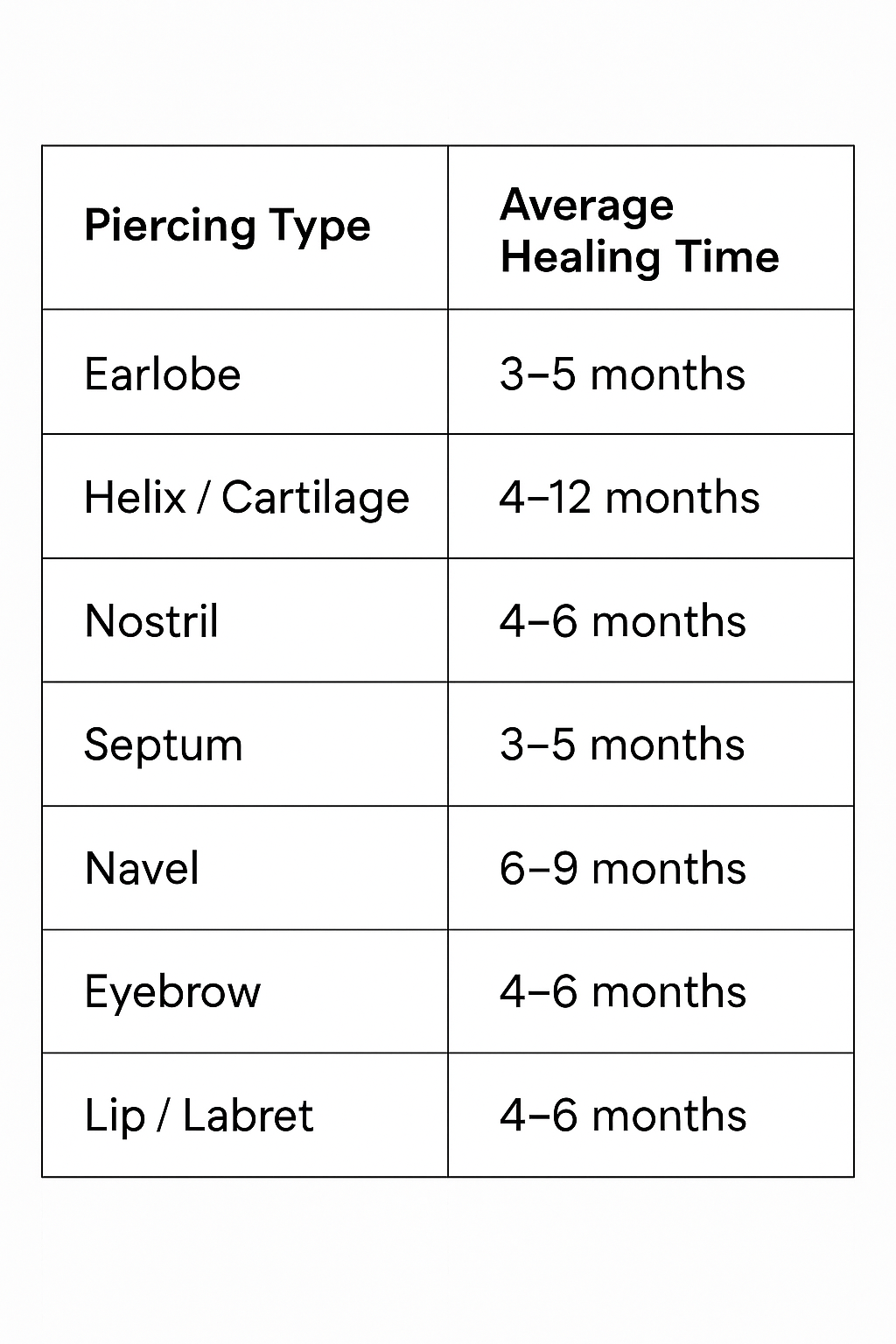Piercing Aftercare Instructions
How to Heal Your New Piercing the Right Way
Getting a new piercing is exciting — it’s a form of self-expression that instantly becomes part of your style. But just like tattoos, piercings require proper aftercare to ensure they heal safely and beautifully. It can be a lot to remember, especially right after you get a piercing, so we’ve gathered everything you need to know in an easy to refer back to guide. At Apollo Tattoo Studios in Kissimmee, our artists and piercers prioritize safety and cleanliness before, during, and after your appointment. Here’s everything you need to know about caring for your new piercing.
Keep It Clean
WASH your hands prior to cleaning or touching your piercing for any reason.
SALINE soak for 5-10 minutes once or more per day.
DRY by gently patting with a clean paper towel, not a cloth. Cloth towels can harbor bacteria and snag on the jewelry.
Tip: Invert a cup of saline solution over the area to form a vacum. For some piercings, it may be easier to apply using a clean paper towel saturated in saline.
What products should I use?
Packaged sterile saline is always the best option for healing piercings. Be careful to read the labels carefully to ensure there are no additives.
AVOID alcohol, hydrogen peroxide, or harsh soaps containing triclosan — they’re too strong and can delay healing.
AVOID ointments, they prevent necessary air circulation for healing.
Hands Off While It Heals
It’s tempting to twist or touch your new jewelry, but resist the urge. It’s normal for your piercing to have some dry, crusty discharge, but avoid picking at it. The more your move your piercing, the more irritation you are causing, and the longer it will take to heal. Don’t forget that your new piercing is an open wound, and is vulnerable to germs and infection. If you have to touch it, always make sure you clean your hands first.
Healing Times: What to Expect
Every piercing heals at its own pace, depending on the location, how you take care of it, and your body’s response, but here’s a general guide. During this period, some redness, tenderness, or clear fluid is normal — but swelling, yellow discharge, or severe pain are not. If you notice those symptoms, contact your piercer or a medical professional.
What is Normal?
Immediately after you get pierced, its normal to experience some bleeding, localized swelling, tenderness, or even bruising. This should go away in a few days.
During the healing process, some discoloration, itching, secretion of a white/yellow fluid ( not pus), will usually form a crust aroudn the jewelry. Your skin will likely tighten around the piericng as its trying to close itself.
Be patient with your body! Piercings heal from the outside in. Although the outside might feel fine and look healed, the interior skin remains fragile. Make sure you keep your routine the entire time.
Avoid These Common Mistakes
No swimming in pools, lakes, or hot tubs for at least 4 weeks.
Avoid makeup, lotions, and perfumes near the piercing site.
Don’t change your jewelry too soon Wait until your piercer confirms it’s fully healed.
Don’t sleep on the piercing, try a travel pillow or side sleeper pillow if needed.
Avoid stress, recreational drug use, including excessive caffeine, nicotine, and alcohol.
Don’t hang any charms from your jewelry until the piercing is fully healed.
Avoid undue trauma such as friction from clothing, excessive motion of the area, and vigerous cleaning.
Avoid all oral contact, rough play, and contact with other bodily fluids on or near your piercing during healing.
Changing Jewelry Care and Upkeep
Even healed piercings can shrink or close in minutes after having been there for years! This varies from person-to-person, but the best way to prevent your piercing from closing is to always keep jewelry in.
Once your piercing is fully healed, you can change the jewelry yourself, but some locations can be a little tricky to remove. Apollo is here to help. You can bring your own jewelry or purchase one of our upgraded options, and our piercers here will switch out your jewelry for you.
We always recommend using high-quality metals, even if you don’t suspect allergy. Look for metals like titanium, or 14k gold. Both are hypoallergenic, and safe for long-term wear.
At Apollo, all our piercing jewelry meets professional safety standards and is sourced from reputable suppliers.
When to Visit Your Piercer?
Come back to the studio if:
You’re unsure whether your piercing is healing properly.
You want to downsize or change jewelry.
You notice bumps, swelling, or any unusual symptoms.
The jewelry falls out.
Our piercers at Apollo are always happy to check your healing progress and make adjustments to keep your piercing looking perfect.
Final Thoughts
Proper aftercare is the difference between a piercing that heals flawlessly and one that causes frustration. Be patient, gentle, and consistent — and when in doubt, ask your piercer for advice.
If you’re ready for your next piercing or need professional guidance, book an appointment at Apollo Tattoo Studio in Kissimmee, FL. We’ll make sure your experience is safe, clean, and comfortable from start to finish.

